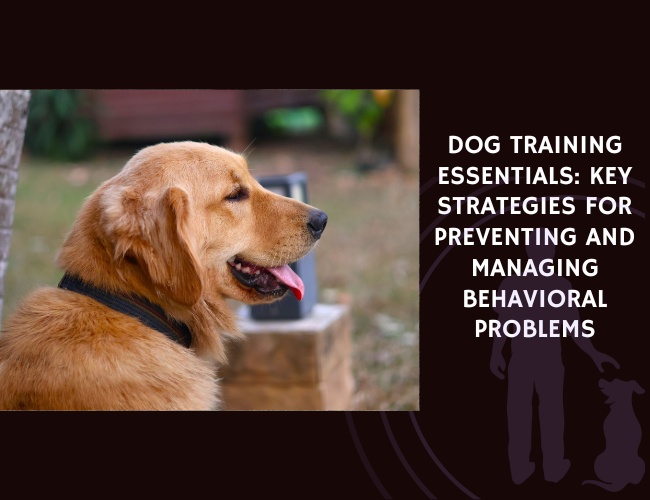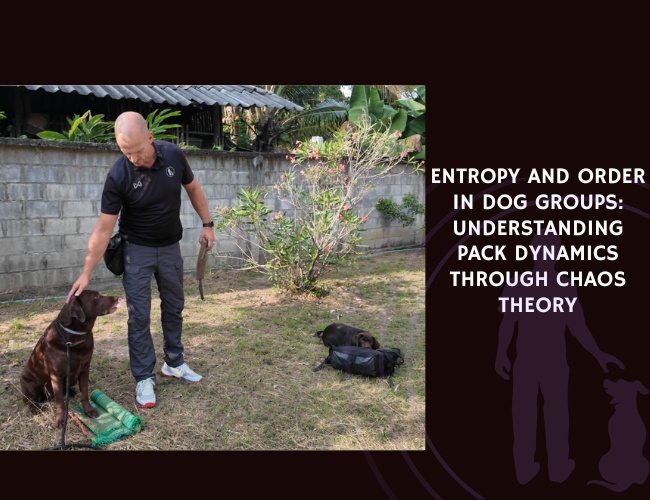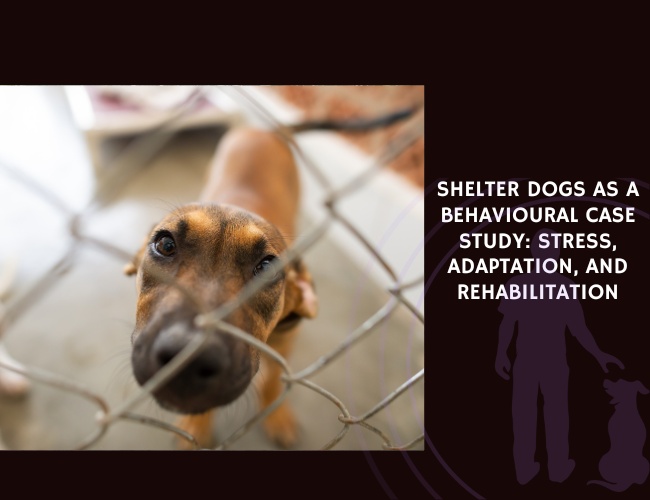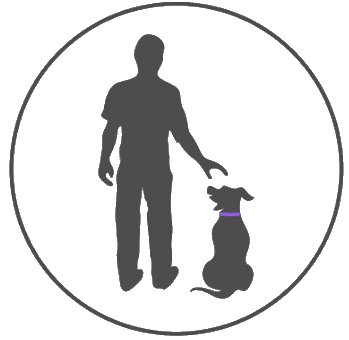Understanding Common Behavioral Issues
Dogs, like humans, can exhibit a variety of behavioral issues that can be challenging for pet owners. Understanding these common problems and their underlying causes is the first step in addressing and managing them effectively.
Overview of Common Problems
Aggression
Aggression in dogs can be alarming and dangerous. It can manifest toward humans, other dogs, or even inanimate objects. The root of aggression often lies in fear, territoriality, or inadequate socialization. Early interventions are crucial, as unchecked aggression can escalate over time.
Separation Anxiety
This occurs when dogs become excessively anxious when left alone. They may engage in destructive behaviors, vocalize persistently, or display signs of distress. The primary causes of separation anxiety include a lack of independence, sudden changes in routine, or past traumatic experiences. Recognizing and addressing this early can prevent more severe issues.
Excessive Barking
Dogs bark to communicate, and while some barking is normal, excessive barking can be problematic. It might be triggered by boredom, fear, attention-seeking, or territorial behavior. Identifying the specific cause is key to managing excessive barking effectively.
Identifying Root Causes of Destructive Behaviors
Destructive behaviors like chewing, digging, and scratching are often signs of underlying issues. These behaviors usually stem from boredom, anxiety, or a lack of mental or physical stimulation. Here’s how you can identify the root causes:
- Boredom: Dogs need mental and physical stimulation. Without it, they can turn to destructive behaviors as an outlet.
- Anxiety: Stress and anxiety can lead to destructive habits. This is common in dogs with separation anxiety.
- Lack of Exercise: Insufficient physical activity can result in pent-up energy being released through destructive actions.
Recognizing the cause behind these behaviors can help in formulating an effective intervention strategy.
Recognizing Signs of Anxiety and Stress in Dogs
Just like humans, dogs can experience stress and anxiety. It’s essential to recognize the signs early to prevent the development of more serious behavioral issues.
Physical Signs
- Panting: Excessive panting can be a sign of stress.
- Shaking or Trembling: Dogs may shake or tremble when anxious.
- Dilated Pupils: Enlarged pupils can indicate fear or stress.
Behavioral Signs
- Pacing: A stressed dog might pace back and forth.
- Excessive Licking: Self-soothing behaviors, like excessive licking, often indicate stress.
- Hiding: Withdrawal from the family or hiding can be a sign of anxiety.
Understanding these signs enables dog owners to provide timely support to their pets. This knowledge is fundamental in creating a positive environment that encourages good behavior and reduces stress.
Addressing common behavioral issues with understanding and empathy can significantly enhance the quality of life for both dogs and their owners. Establishing a firm foundation through early intervention and training is crucial. Our journey into effective training methods will explore various approaches to manage and prevent these behaviors, ensuring a happier, healthier relationship with your canine companion.
Effective Training Methods and Approaches
Introduction to Positive Reinforcement Training and Its Benefits
Positive reinforcement training is a foundational approach in modern dog training. This method involves rewarding desired behaviors to encourage their repetition. Common rewards include treats, toys, and praise, which help make the training process enjoyable and effective. Research has shown that positive reinforcement:
- Increases learning speed
- Reduces stress
- Strengthens the bond between dog and owner
By using positive reinforcement, you are not only training your dog but also fostering a relationship built on trust and respect.
Clicker Training Techniques and Appropriate Implementation
Clicker training is a specific form of positive reinforcement that uses a small handheld device to make a distinct clicking sound, signaling to the dog that they have performed the desired behavior. This clear and consistent marker helps bridge the gap between the action and the reward. Here’s how to implement clicker training effectively:
- Introduce the Clicker: Start by clicking and treating your dog several times in a row to establish the connection between the click and a reward.
- Shape Behavior: Use the clicker to mark successive approximations of the desired behavior, rewarding small steps towards the end goal.
- Consistent Timing: Click at the exact moment the dog exhibits the correct behavior to ensure clarity.
- Wean Off Clicker: Gradually phase out the clicker as the dog becomes consistent with the behavior, substituting verbal praise or other rewards.
This method is particularly effective because of its precision, helping dogs understand exactly which behavior is being rewarded.
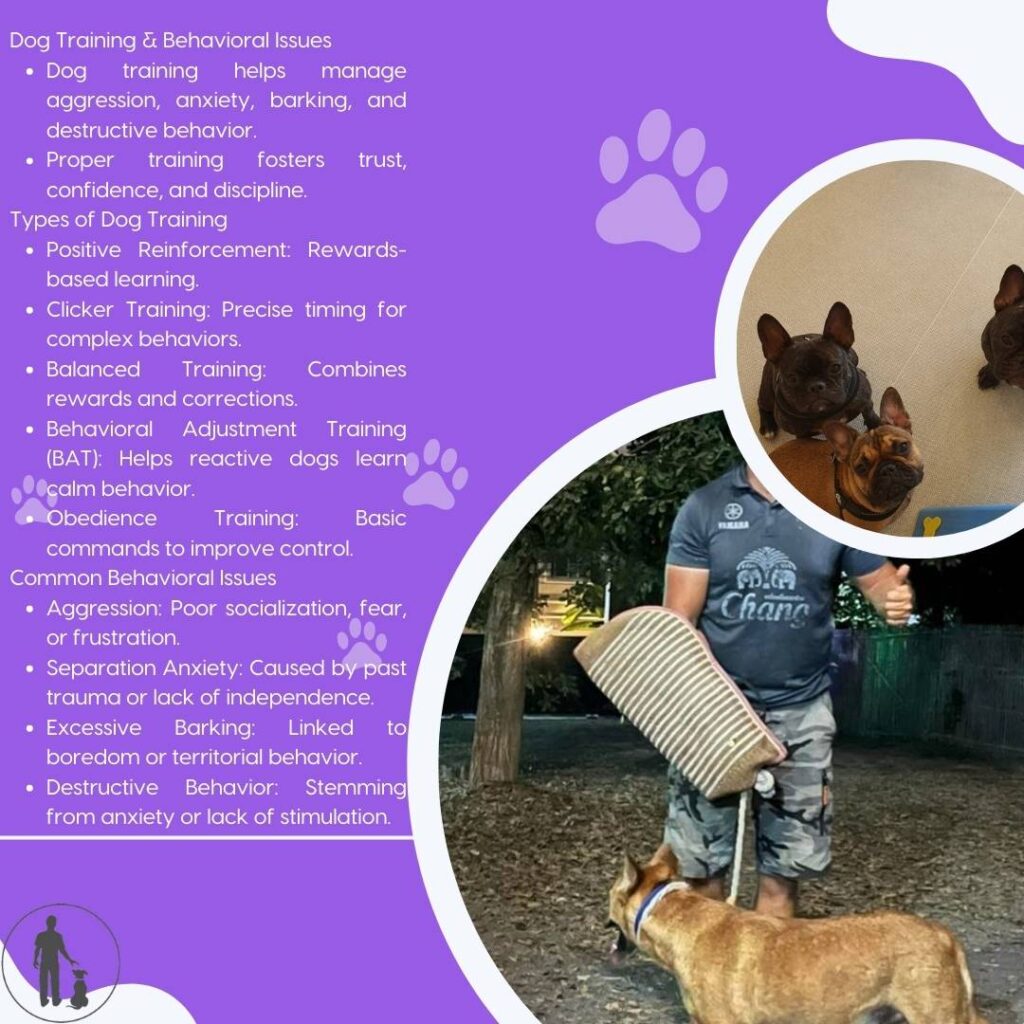
Behavioral Adjustment Training (BAT) for Reactive and Fearful Dogs
Behavioral Adjustment Training (BAT) is a specialized approach designed to help dogs learn to behave calmly in situations that trigger fear or aggression. This method focuses on empowering dogs to make better choices by reinforcing calm behavior and providing them with safe exposure to their triggers. Here’s a step-by-step overview of BAT:
- Identify Triggers: Determine the specific situations or stimuli that cause reactive or fearful behavior.
- Create Distance: Begin training at a distance where the dog can observe the trigger without reacting.
- Mark Calm Behavior: Use a marker (like a click or a word) to indicate when the dog exhibits calm behavior, followed by a reward.
- Gradually Decrease Distance: Slowly decrease the distance to the trigger as the dog becomes more comfortable and confident.
- Repeat in Various Contexts: Practice in different environments to generalize the behavior.
BAT is particularly effective for reactive and fearful dogs, as it helps them build confidence and reduces their overall stress.
Effective training methods, such as positive reinforcement, clicker training, and BAT, are essential tools in managing and preventing behavioral issues in dogs. These approaches not only improve behavior but also enhance the overall quality of life for dogs and their owners.
Moving forward, it’s important to consider the preventative aspects of training, ensuring that early intervention and proper routines are in place to support our furry friends.
Prevention Through Early Intervention
Creating a proactive training and socialization plan for your puppy is pivotal in preventing many behavioral issues down the line. Let’s delve into why early socialization, mental stimulation, enrichment activities, and tailored exercise routines based on breed and age are essential.
Importance of Early Socialization and Puppy Training Programs
Early socialization and structured puppy training are essential components of a well-rounded training regimen. Puppies need to be exposed to various environments, people, and other dogs to develop into well-adjusted adults.
- Preventing Behavioral Problems: Early exposure helps prevent issues such as aggression and fearfulness. Structured puppy training programs teach crucial skills like bite inhibition and appropriate play, fostering good manners and adaptability.
- Building Confidence: Positive experiences during early development decrease the likelihood of anxiety and fear, making it essential for puppies to have varied and controlled experiences to build their confidence.
Mental Stimulation and Enrichment Activities
Just like humans, dogs need mental stimulation to stay healthy and happy. Simply put, a busy mind is a happy mind.
- Reducing Boredom and Anxiety: Mental stimulation prevents boredom and reduces anxiety, which in turn prevents destructive behaviors. Enrichment activities such as puzzle toys, scent games, and interactive play can significantly enhance your dog’s cognitive function.
- Improving Cognitive Function: Different activities offer varied challenges, keeping your dog engaged. Regularly introducing new games and toys keeps their brain sharp and promotes a sense of achievement.
Establishing Proper Exercise Routines Based on Breed and Age
Exercise is a critical part of any dog’s routine, but it needs to be customized based on breed and age to be truly effective.
- Tailored Exercise Plans: Different breeds have different energy levels and exercise needs. For example, a Border Collie may need more intense physical stimulation compared to a French Bulldog. Puppies also have different exercise needs compared to adult dogs. Recognizing and catering these differences prevent hyperactivity, anxiety, and aggression.
- Consistency and Balance: Consistent exercise routines help manage energy levels and maintain a calm demeanor. Balance is key—too little exercise can lead to pent-up energy and behavioral issues, while too much without proper build-up can cause physical harm, especially in growing puppies.
Building a solid foundation through early intervention ensures your dog leads a balanced and fulfilling life. Proper socialization, mental stimulation, and tailored exercise create a harmonious household and set your dog up for success in more advanced training.
To maintain your new skills and deepen your understanding, continue practicing and building on these fundamentals.
Building a Strong Training Foundation
Basic Obedience Commands and Their Role in Behavior Management
Building a strong training foundation for your dog is essential for effective behavior management. Basic obedience commands like “sit,” “stay,” “come,” and “leave it” are fundamental tools that can help prevent and address various behavioral issues. These commands can be taught through positive reinforcement, which involves rewarding desired behaviors with treats, praise, or toys. Consistently practicing these commands in different environments increases a dog’s self-control, making it easier to manage impulsive behaviors such as jumping on people or leash pulling.
Introducing these basic commands early and reinforcing them regularly helps establish clear communication between you and your dog. This clear communication is critical in reducing confusion and frustration for both parties. Moreover, when a dog knows what is expected, it is less likely to exhibit undesirable behaviors stemming from uncertainty or anxiety.
Developing Consistency in Training Practices
Consistency is key to effective dog training. Dogs understand and learn best when the rules and expectations are clear and consistent. It’s essential to use the same commands, hand signals, and cues every time and ensure that all family members follow the same training routines. Inconsistent training can lead to confusion and make it harder for your dog to understand what is expected of them.
Here are a few tips to maintain consistency in your dog training practices:
- Set Clear Rules: Decide on the house rules and communicate these to everyone in the household.
- Regular Training Sessions: Incorporate short, daily training sessions to reinforce commands and behaviors.
- Consistent Rewards: Use the same type of rewards for desired behaviors to maintain motivation and clarity.
- Routine: Keep a consistent routine for feeding, walking, and training.
By maintaining consistency, you build a structured environment for your dog, facilitating faster and more reliable learning.
Strengthening the Dog-Owner Bond Through Positive Training Experiences
A strong bond between you and your dog is fundamental to successful training and overall well-being. Positive training experiences not only help in teaching desirable behaviors but also strengthen the emotional connection between you and your dog. Using positive reinforcement methods, such as treats, praise, and play, makes the training process enjoyable for your dog. When dogs associate training sessions with positive outcomes, they are more likely to be engaged and responsive.
Positive reinforcement also reduces stress and builds trust. Dogs that trust their owners are more secure and less likely to exhibit anxiety-related behaviors. Here are some ways to enhance your bond through training:
- Patience and Understanding: Be patient and understanding during training, recognizing that learning takes time.
- Engaging Activities: Include activities your dog enjoys, such as playing fetch or running, to make training more exciting.
- Regular Interaction: Spend quality time interacting with your dog outside of training sessions to strengthen your relationship.
- Affection: Show affection generously through petting, cuddles, and positive verbal cues.
Through these practices, training transforms into a channel for enhancing your relationship with your dog, resulting in a well-behaved and happy pet.
As we move forward with dog training strategies, it’s clear that a strong training foundation is pivotal for managing behaviors and fostering a healthy, happy relationship with your dog.
Advanced Problem-Solving Strategies
Specialized Approaches for Addressing Aggression and Fear
When dealing with aggression and fear in dogs, understanding the root causes is crucial. Poor socialization, traumatic experiences, and genetic predispositions can contribute to these behaviors. Here are some specialized approaches to address these complex issues:
- Desensitization
Desensitization involves gradually exposing your dog to the anxiety or fear-inducing stimuli at a low intensity, then slowly increasing exposure as your dog becomes more comfortable. This process requires patience but helps your dog learn to tolerate and eventually ignore these stimuli. - Counter-Conditioning
Counter-conditioning pairs the fear-inducing stimulus with something positive, such as treats or playtime. Over time, your dog begins to associate the previously negative stimulus with positive experiences, thus reducing fear.
By combining these techniques, you can effectively reduce both aggression and fear. For instance, if a dog is aggressive towards other dogs, desensitization can involve controlled exposure to other dogs at a distance, while counter-conditioning rewards calm behavior.
Desensitization and Counter-Conditioning Techniques
Let’s delve deeper into how these techniques can be applied:
- Step-by-Step Desensitization
- Identify the Trigger: Determine what makes your dog anxious or aggressive.
- Control Exposure: Introduce the trigger at a distance or low intensity where your dog remains calm.
- Gradual Increase: Slowly decrease the distance or increase the intensity of the trigger, ensuring your dog stays relaxed.
- Consistent Exposure: Regular, calm exposure helps reinforce tolerance.
- Step-by-Step Counter-Conditioning
- Pair with Positive Stimuli: When the trigger is present, offer high-value rewards like favorite treats or toys.
- Consistent Repetition: Repeat this during each exposure to the trigger to build a positive association.
- Monitor Progress: Watch for signs of reduced anxiety or aggression as your dog starts associating the trigger with something enjoyable.
When and How to Seek Professional Help
While many behavioral issues can be managed at home, there are instances when professional intervention is necessary:
- Severe Aggression or Phobias: If a dog poses a significant risk to people or other animals, or if phobias severely impact their quality of life.
- Lack of Progress: If desensitization and counter-conditioning do not lead to noticeable improvements after several weeks.
- Complex Behavior Problems: Complicated issues that involve multiple triggers or deep-seated fears may require professional expertise.
- Professional Trainers and Behaviorists: Certified professionals have the training to handle severe cases effectively. Look for credentials like Certified Professional Dog Trainer (CPDT) or Certified Applied Animal Behaviorist (CAAB).
Recognizing When to Seek Help
Knowing when to seek help can save time and prevent escalation of behavior problems. If you’re seeing minimal results or feeling overwhelmed, consulting a professional might be the best course of action.
Remember, training and behavior modification require consistency, patience, and understanding. Building a strong, trusting relationship through positive experiences will support successful behavioral adjustments.
By mastering these advanced strategies and knowing when to seek professional help, you can significantly improve your dog’s behavior. Next, we will explore how to measure the success of these training efforts effectively.
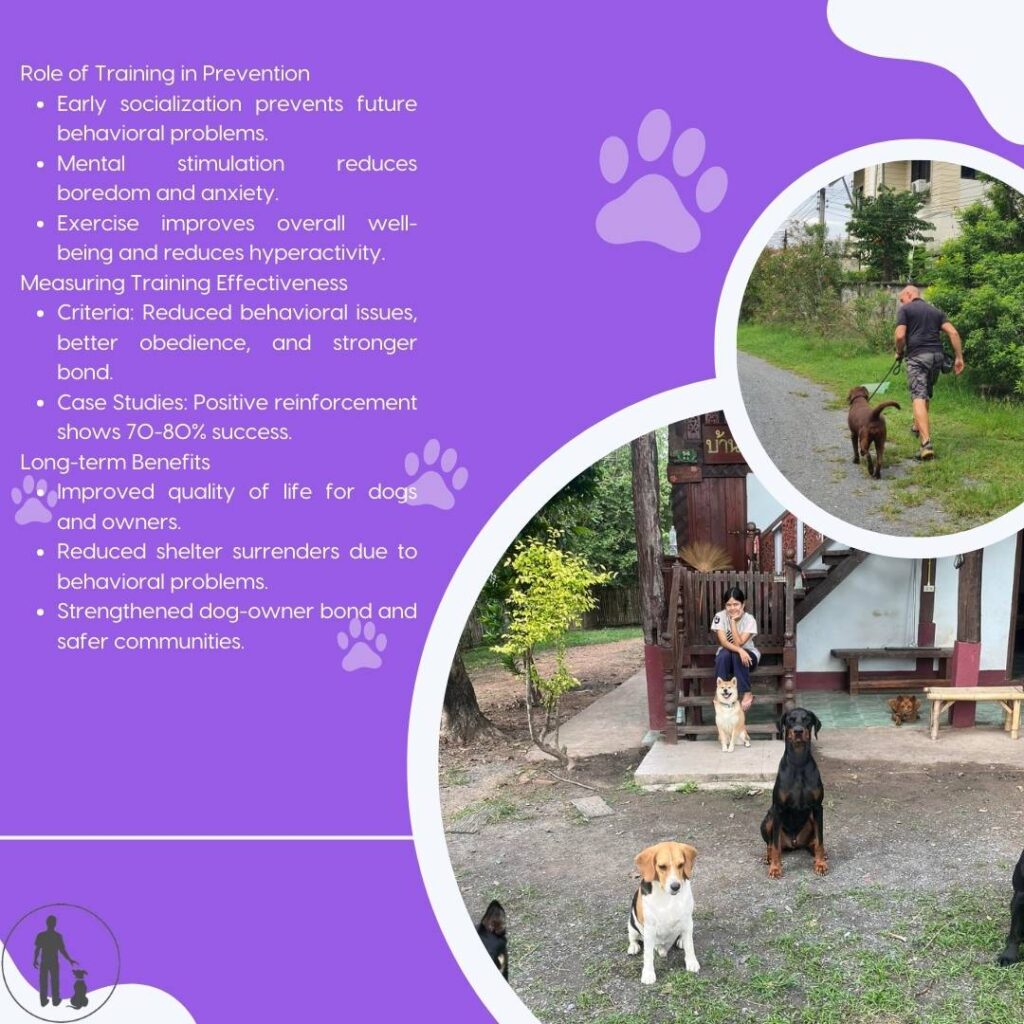
Measuring Training Success
Measuring the success of dog training is a nuanced process, essential for ensuring both short-term achievements and long-term behavioral improvements. This chapter will guide you through tracking behavior improvements and setbacks, evaluating the strength of the dog-owner relationship, and assessing long-term changes in your dog’s behavior. Let’s delve into these aspects to understand how you can effectively gauge the progress of your furry friend.
Tracking Behavior Improvements and Setbacks
One of the primary ways to measure training success is by monitoring your dog’s behavior before and after training sessions. Pay attention to the frequency, intensity, and circumstances of any undesirable behaviors. For example, if your dog barked excessively before beginning training, note how often they bark now and in what situations. This will help you see how much progress has been made and identify any areas needing additional work.
Tools for Tracking
- Behavior Journals: Keep a log of your dog’s behaviors, noting instances of both improvements and setbacks.
- Video Recordings: Occasionally recording training sessions can help you visually track changes and improvements over time.
- Behavior Charts: Use charts to plot the frequency of specific behaviors, which can make it easier to spot trends.
Evaluating the Strength of Dog-Owner Relationships
A strong, positive bond between a dog and their owner is crucial for successful training. Evaluating this relationship involves looking for signs of trust, communication, and mutual understanding. A well-bonded dog will show eagerness to please their owner, respond positively to commands, and exhibit fewer anxiety-related behaviors.
Indicators of a Strong Relationship
- Responsiveness to Commands: A dog that responds quickly and correctly to commands demonstrates good communication and understanding.
- Affection and Trust: Genuine affection, such as tail wags, leaning into the owner, and seeking closeness, are signs of a strong bond.
- Reduced Problem Behaviors: A decrease in issues like aggression, separation anxiety, and excessive barking often indicates a trusting and comfortable relationship.
Assessing Long-Term Behavioral Changes
Long-term behavioral changes are a key measure of training success. These changes show that the dog has not only learned new behaviors but has also integrated them into their daily routine. Regular assessment over months or even years is essential to ensure these behaviors are lasting.
Steps for Assessing Long-Term Changes
- Consistent Check-Ins: Regularly check your dog’s behavior in various situations to ensure that training effects are permanent.
- Ongoing Training: Continuously reinforce positive behaviors to maintain them. Training should be a lifelong commitment.
- Re-Evaluation After Major Life Changes: If there’s a significant change in your dog’s life, like moving to a new home or introducing a new family member, reassess their behavior to ensure they are coping well and behaviors remain consistent.
By thoroughly tracking improvements and setbacks, evaluating your relationship with your dog, and assessing long-term behavioral changes, you can ensure that your training efforts are both effective and enduring. Keep in mind that each dog is unique, and adjustments may be necessary to suit your pet’s individual needs. Maintaining this diligence will help create a harmonious and happy life for you and your dog.
Modern Innovations in Dog Training
Integration of Technology and AI in Training Methods
In the ever-evolving sphere of dog training, technology and artificial intelligence (AI) are playing a transformative role. These modern tools are enhancing the way we understand and shape canine behavior, making training more efficient and personalized.
Smart Collars and Training Apps

One of the most notable advancements is the development of smart collars. These devices not only track a dog’s physical activity but also monitor behavior patterns. For instance, a smart collar can detect excessive barking or unusual movement patterns, providing owners with real-time insights into their dog’s behavior. This data helps identify triggers for anxiety, aggression, or other behavioral issues, enabling more targeted interventions.
Training apps complement these smart devices by offering customized training plans based on collected data. These apps can suggest specific exercises or provide immediate feedback to reinforce positive behavior, making training more adaptive and responsive. The integration of technology ensures that training can continue seamlessly even when professional trainers are not around.
Applications of AI in Behavioral Training
AI has introduced new possibilities in dog training by leveraging machine learning algorithms to predict and respond to canine behaviors. AI-enabled devices can analyze vast amounts of data to recognize patterns and predict future behaviors. This predictive capability allows for early intervention, preventing the escalation of undesirable behaviors.
For instance, AI can help model scenarios that typically trigger a dog’s anxiety or aggression and provide real-time suggestions to mitigate these responses. This proactive approach, informed by data, greatly enhances the effectiveness of training programs.
Advances in Understanding Canine Behavior Through Neuroscience
The field of neuroscience has significantly deepened our understanding of canine behavior. Research into the brain processes of dogs has provided insights into how they perceive the world, make decisions, and form memories.
Implications for Training
Understanding the neurological basis of behavior allows trainers to develop methods that align with natural canine processes. For example, recognizing how dogs process rewards means that trainers can optimize reinforcement schedules to enhance learning. The application of neuroscience ensures that training is not only effective but also respects the cognitive and emotional well-being of dogs [Ling et al., Neuroscience Insights].
New Tools and Resources for Behavior Modification
Innovation isn’t limited to technology and AI; the development of new tools and resources has also revolutionized dog training.
Interactive Toys and Puzzle Feeders
Interactive toys and puzzle feeders are designed to stimulate a dog’s mind and mitigate boredom-related behaviors. These tools engage dogs in problem-solving activities, providing mental stimulation that helps reduce anxiety and destructive behaviors. Regular use of these tools can lead to noticeable improvements in behavior and overall welfare of the dog.
Environment Enrichment Products
Environmental enrichment products, such as scent games and varied physical setups, help create a stimulating environment for dogs. Such products are especially beneficial for breeds with high energy levels and intelligence, offering an outlet for their innate abilities and reducing the likelihood of developing behavioral issues [Keshavan et al., Environmental Enrichment].
Transition to Next Topic
These advancements underscore the dynamic nature of dog training, demonstrating how modern science and technology can significantly enhance traditional methods. Understanding and utilizing these innovations can lead to more effective and humane training practices, paving the way for healthier, happier canine companions.

